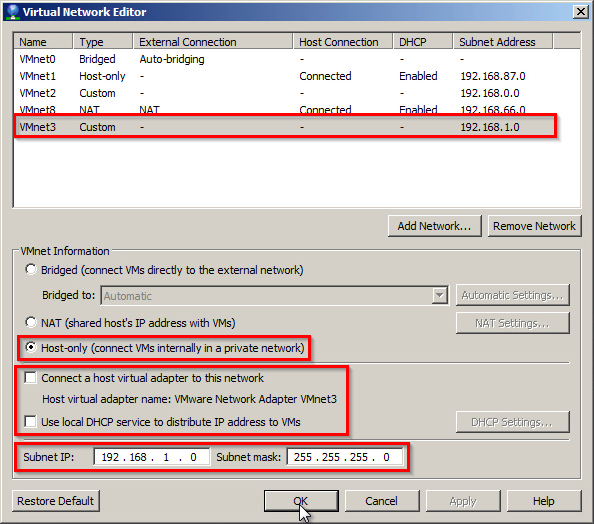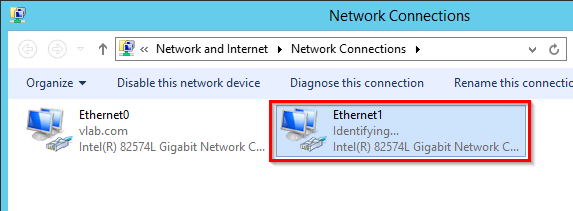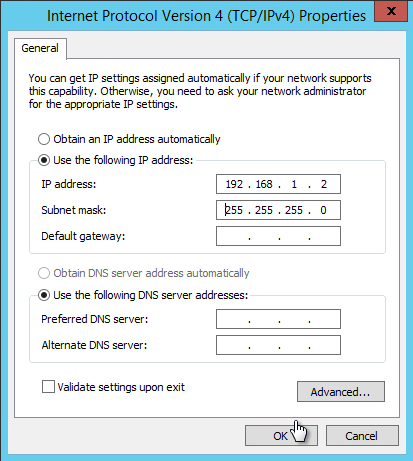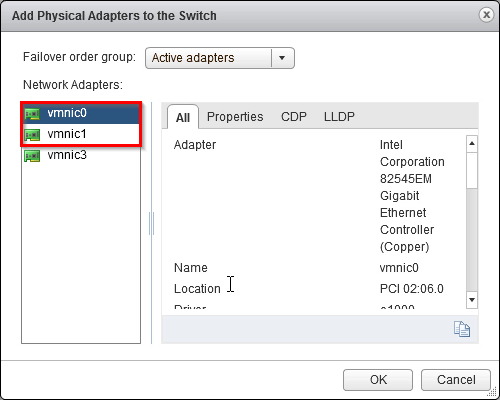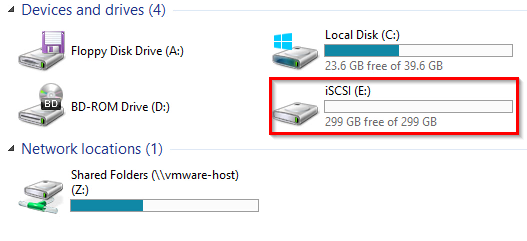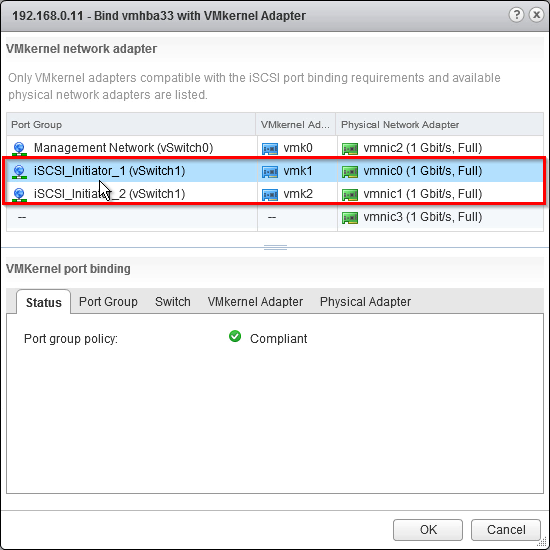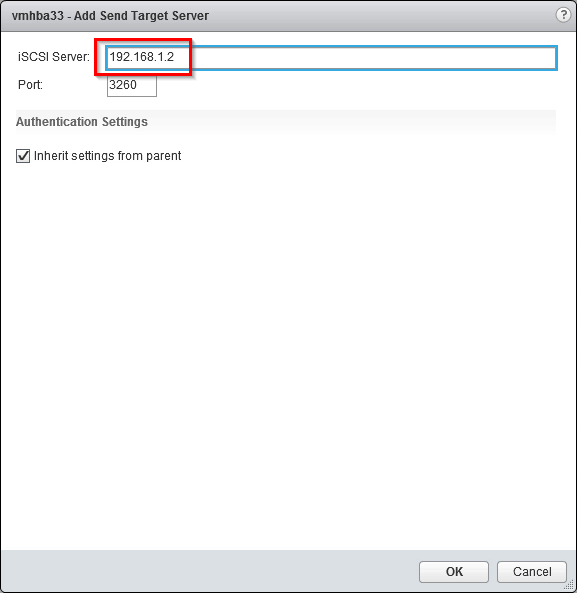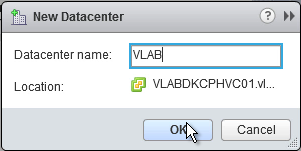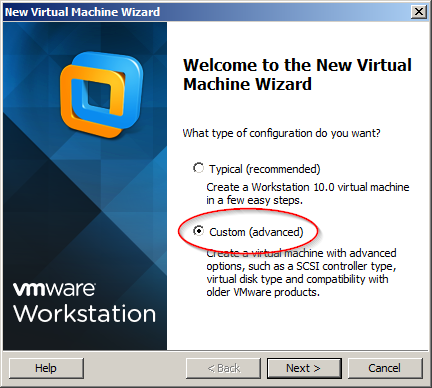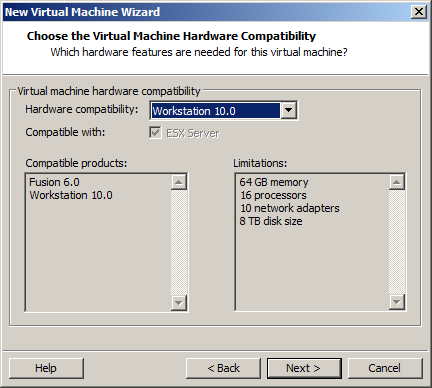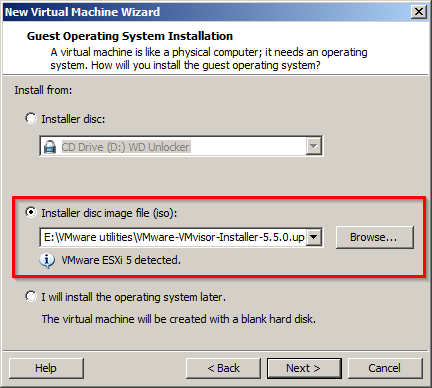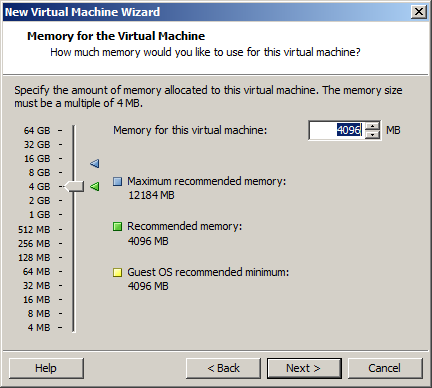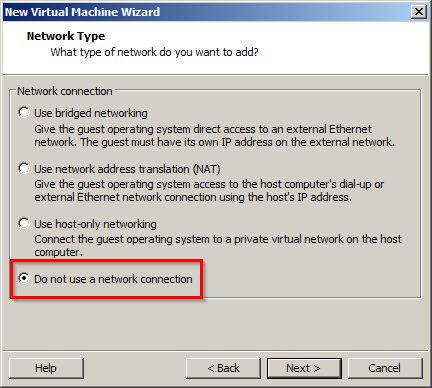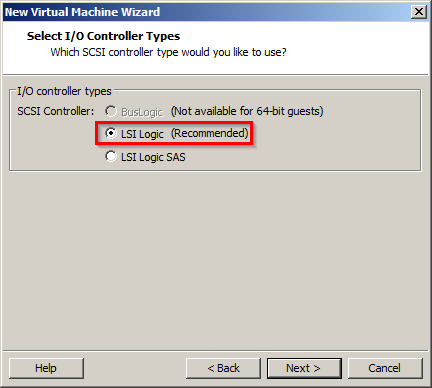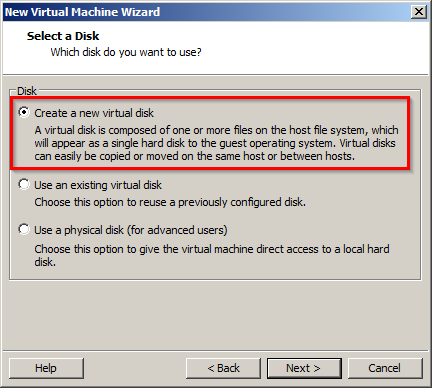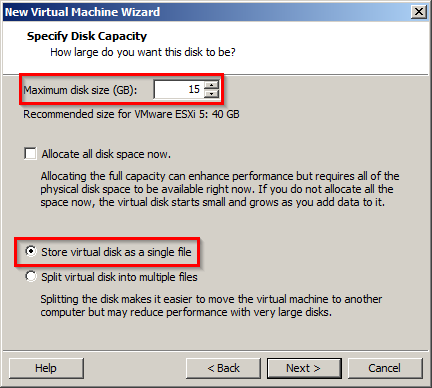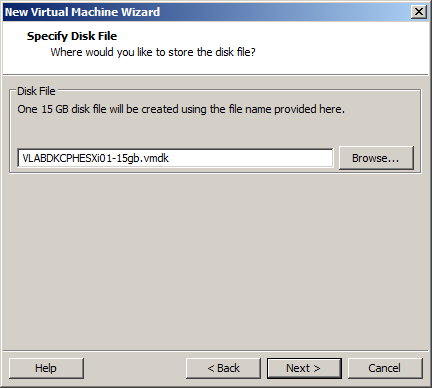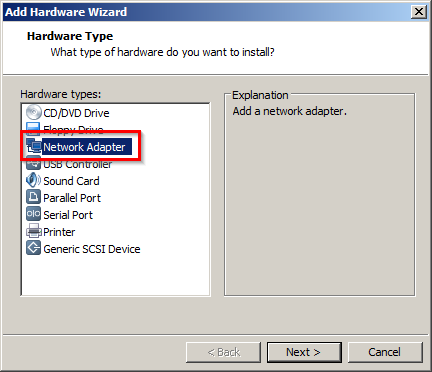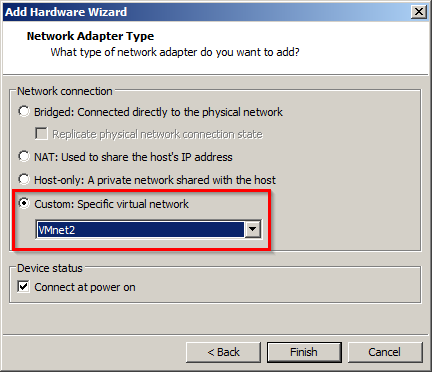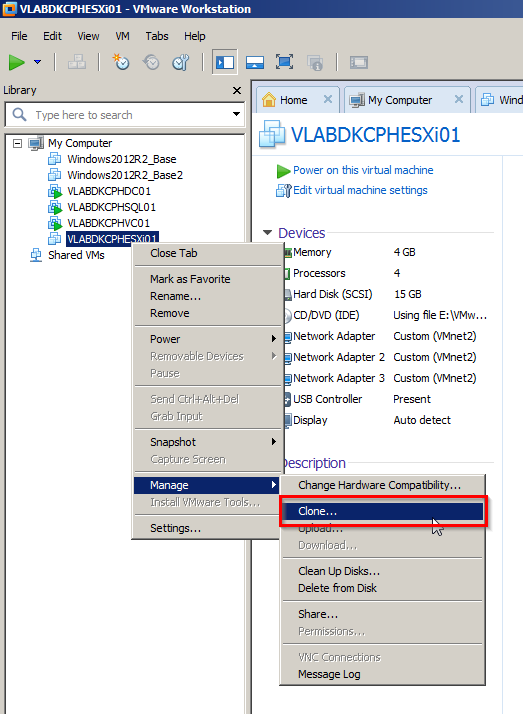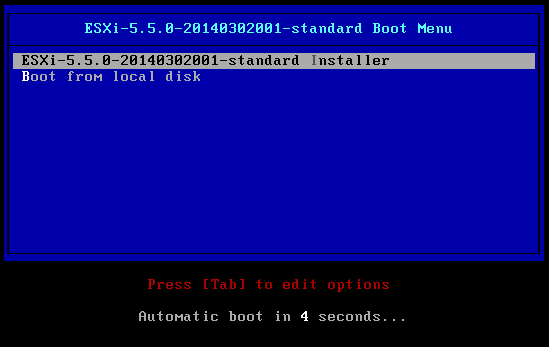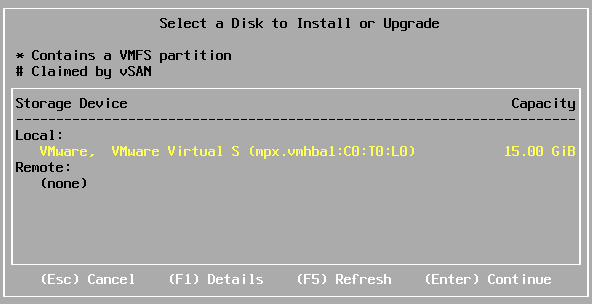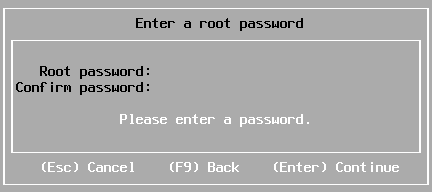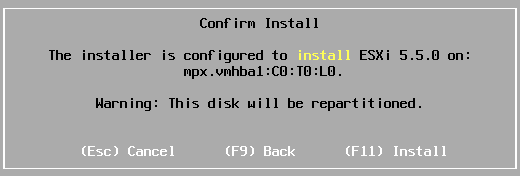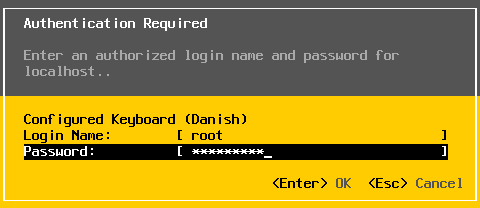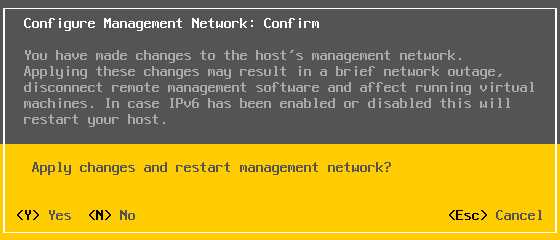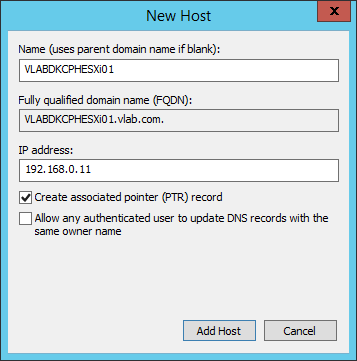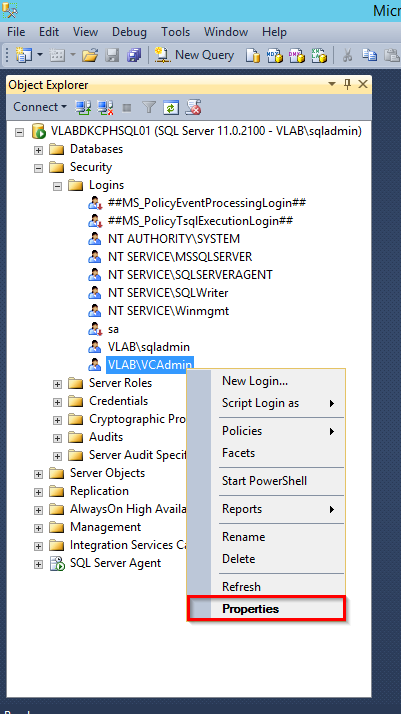Next up is setting up storage with iSCSI. As the original article suggests I will also use Microsoft’s iSCSI solution.
- Make VMnet3
- Add 2 NICS from both ESXi hosts to VMnet3
First go to VMware Workstation’s Virtual Network Editor and create a VMnet3.
Add another Network Adapter to the vCenter server and assign it to VMnet3.
Assign an IP to the new NIC.
Next go to the each of the ESXi servers in VMware Workstation and assign the additional network adapters previously added to VMnet3.
Open Internet Explorer on the vCenter server and login to the vSphere environment https://ip-of-vcenter-server:9443/vsphere-client. Then go to vCenter -> Hosts and Clusters -> VLAB -> VLAB Cluster -> 192.168.0.11.
Once ESXi01 has been selected click the Networking tab and press the Add Host Networking icon.
Select Vmkernel Network Adatper.
Select New standard switch.
Click the green plus sign.
Add two adapters. Active adapters will not show up on the list, so do not worry picking one already in use.
If you do not have any adapters available then add some more network adapters to the ESXi server through VMware Workstation.
What it should look like;
Name the VMkernel for iSCSI_Initiator_1 and press Next.
Assign a static IP. Mine is 192.168.1.11/24.
Create a new VMkernel but add it to the existing vSwitch1.
Name it iSCSI_Initiator_2 with a static IP of 192.168.1.12.
Select vSwitch1 and the iSCSI_Initiator_2 and press the Edit icon.
Go to Team and failover and enable Override. Remove one of the NICs from the active adapters list to the unused adapters list.
Next do the same for iSCSI_Initator_1 so that each iSCSI initiator VMkernel is utilizing its very own active network adapter.
iSCSI_Initiator_1 = Active Adapter vmnic0, Unused Adapter vmnic1
iSCSI_Initiator_2 = Active Adapter vmnic1, Unused Adapter vmnic0
Follow the same steps for ESXi02. Create a new vSwitch with two iSCSI initators but assign them different IP addresses. For instance 192.168.1.13 and 192.168.1.14, and then override the failover order and change around the adapters.
Next go to Storage and add a storage adapter.
Copy the IQN identifier address.
Next create a new hard disk on the vCenter server. I have 1TB non-SSD hard disk that I am using for other stuff. I have 600gb available on that disk and I will be spending 300gb for the VM storage. I will not be running a lot of VMs to start with anyway so this will suffice for now. Remember to place the VMDK file somewhere else than the SSD.
Then initialize the disk so it is usable. This will be the iSCSI storage E.
Next go to Server Manager and Add a new role. Expand File And Storage Services -> File and iSCSI Services and select iSCSI Target Server.
Select To create an iSCSI virtual disk, start the New iSCSI Virutal Disk Wizard.
Select the E drive created earlier.
Name it Datastore1.
Select about half of the total iSCSI drive and then select Dynamically expanding. I would not recommend fixed size as this would allocate all the space straight away, and since I do not know if I will be using all of the space then it is better to choose dynamic.
Select New iSCSI target.
Name it by the FQDN of the ESXi servers.
Click Add.
Select Enter a value for the selected type and paste the IQN identifier of the first ESXi serverfrom the vSphere environment in here.
Add both of the iSCSI adapter IQN identifiers. One IQN identifier from each ESXi server.
Finish the wizard with no additional configured settings.
Go to Tasks and select New iSCSI Virtual Disk.
Select the 300GB (E) drive.
Name it Datastore2.
Again assign half of the total iSCSI storage drive and select the Dynamically expanding. The reason I am giving 149GB and 148GB to Datastore1 and Datastore2 respectively is being able to identify which virtual disk needs fixing in case of a break down.
Choose the Existing iSCSI target.
Finish the wizard with no additional settings to create the new iSCSI virtual disk.
Go back to the vCenter and make sure the newly created iSCSI adapter is selected on ESXi01. Then go to Network Port Binding and press the Add icon.
Add both of the VMkernel iSCSI initiators.
What it should look like;
Next select the Targets tab and the Dynamic Discovery and then press Add.
Type the IP of the iSCSI server which in my case is 192.168.1.2.
Rescan the adapter and the LUNs should appear.
Repeat this on ESXi2.
Two LUNs should appear on each of the ESXi servers with 4 paths each. This will allow failover.
Building a vSphere 5.5 home lab: Part 1 – VMware Workstation 10 configuration
Building a vSphere 5.5 home lab: Part 2 – Base Template
Building a vSphere 5.5 home lab: Part 3 – Prepare the base template
Building a vSphere 5.5 home lab: Part 4 – Domain Controller
Building a vSphere 5.5 home lab: Part 5 – The SQL Server
Building a vSphere 5.5 home lab: Part 6 – The vCenter Server
Building a vSphere 5.5 home lab: Part 7 – Install Elastic Sky X Integrated
Building a vSphere 5.5 home lab: Part 8 – Add hosts to the vCenter
Building a vSphere 5.5 home lab: Part 9 – iSCSI Storage
